Land of Memory – The Map
Trails, monuments and cities
The underground fortress of Verdun
This place was the operational nerve centre of the Battle of Verdun. An automated ride through the fort takes you past realistic reconstructions of different aspects of the day-to-day lives of the soldiers based in these underground galleries.
The Crêtes des Eparges ridge
Marked by craters caused by mine explosions, this strategic position still bears the scars of mine warfare.
The trenches of Bois brûlé and the Bavarois (Bavarians)
French and German First World War trenches have been preserved intact in this forest.
Lantin fort (BE)
Experience the unusual in a remarkably preserved fort! An interactive show/itinerary and a night in a troop’s bunk will help you relive reality for soldiers in 1914.
Loncin fort national necropolis and its museum (BE)
Immerse yourself in the nightmare of August 1914! This unique site combines emotions, memory, and history and houses rare, strange, and even surprising objects.
Flémalle fort (and its museum) (Flémalle, BE)
Stigmatized by the bombings of 1940, today this fortification is experiencing a second youth thanks to the 3D technologies that make the next-generation walls tell their tales.
Ethe-Latour and the Laclaireau valley
Amidst the woods and valleys of the Lorraine region there are multiple villages built in the local style strung out along the roadside which still bear the scars of the battles of 1914. Many commemorative sites are to be found here.
The Marguerre military base at Loison
These bases to the rear of the lines offer a window onto the daily routine of the German soldier, before and during the Battle of Verdun.
Vaux Fort
The setting for bitter fighting, this fort symbolizes the bravery of French soldiers during the battle of 1916.
Douaumont Fort
Douaumont Fort was one of the strongest defensive fortifications in Verdun. It’s one of the key WW1 commemorative sites for both French and Germans.
The monument to victory and the soldiers of Verdun
This monument in Verdun town centre commemorates the successful defence of the town in 1916.
The Butte de Montsec hill
Built on a hill boasting one of the finest views in Lorraine, this monument commemorates the US soldiers who fought in the area during 1918.
The Meuse-Argonne American Memorial
This impressive 58-metre high tower commemorates the battles fought by the US Army in the Forest of Argonne region in the autumn of 1918.
The Butte de Vauquois hill
This was a place of immense suffering due to the mine warfare waged here. A network of tunnels, several kilometres long, was dug into the hill. Some tunnels are still accessible.
The Maginot line: the Montmédy salient
The Montmédy salient, a fortified sector, stretches over about 30 km. Its key features are the fortifications at Villy-la-Ferté and Thonnelle.
Devèze pillboxes around Houffalize (BE)
These camouflaged pillboxes were built the length of the eastern frontier from the Semois to the Vesdre rivers. These miniature forts were designed to house 3 to 4 men whose job was to slow down the enemy’s advance.
The "Von Grau zu Grün" heritage trail
This walking trail starts at Dasburg and follows the Nazis’ old defensive line on the western border, which was called the Siegfried Line or ‘Westwall’.
Eben-Emael fort (BE)
This fort’s job was to protect the bridges over the Meuse and the Albert canal in the area around Visé, Maastricht and Lanaken, thus preventing an invading army from moving over these crossing points and onwards into Belgium.
Tancrémont fort (BE)
Tancrémont fort is a Belgian fort about 3km to the south of Pepinster. Like the forts of Aubin-Neufchâteau, Battice and Eben-Emael, it was built in the 1930s in order to complement the 12 forts of the fortified position of Liège, built around 1880.
Hosingen and its water tower (LU)
First Lieutenant Thomas Flynn and his company held out for days in a small Luxembourg town before being taken prisoner.
The Smugglers' trail, Troisvierges (LU)
This project centres on the smuggling into Belgium of members of the Luxembourgish resistance and those fleeing from forced labour during the last years of the war 1940-45.
La Gleize - La Gleize museum and Malmedy Massacre memorial
La Gleize is part of the Belgian village of Stoumont in the Province of Liège, Wallonia. The ‘December 44’ museum is located in La Gleize, where the Germans effectively lost the Battle of the Bulge. The museum focuses exclusively on this aspect of local history.
From Chartreuse to Robermont, memories of 14-18 (Liège, BE)
Walk in the footsteps of the resistance fighters during World War I from Chartreuse and its greenery to the lawn of honor in Robermont.
La Roche-en-Ardenne (BE)
A so-called ‘Martyred town’, destroyed by the Allies in December 1944 during the Battle of the Bulge, La Roche-en-Ardenne was also the place where British and US forces linked up to pinch out the German salient.
"Le Bois Jacques" wood (Foy-Bastogne-BE)
Made famous by the television series ‘Band of Brothers’, the wood of ‘le Bois Jacques’, a stone’s throw from the Mémorial du Mardasson, has retained several ‘foxholes’ dug by American paratroopers during the Battle of the Bulge.
The National Monument to the Strike (Wiltz, LU)
This monument commemorates the victims of German oppression following the Luxembourgish National Strike of 1942.
The Duzey gun
Located in the Bois de Warphémont forest in Meuse, the German Duzey gun weighed 20 tonnes and had a range of 27 kilometres. Il bombarded Verdun during 1916..
The Chattancourt trench
Here, a full 100 metre-long trench complete with shelters has been completely reconstructed with the help of instruction manuals and photographs from the time, along with soldiers’ eyewitness accounts.
Troyon fort
This fort is entirely made from masonry, rather than concrete. In September 1914, it resisted German bombardment and infantry attacks, thus saving Verdun from encirclement and protecting the rear of the French forces.
Destroyed villages
Nine villages in the ‘red zone’ were wiped from the map during the Battle of Verdun. These ghost villages, said to have ‘died for France’, have become moving commemorative sites with the construction of chapels and war memorials following the war’s end.
The trench of the bayonets
This monument, built thanks to an American benefactor, is based on a legend – that of French soldiers buried alive – and upright – by shelling whilst standing on guard in their trenches. The site has retained its power in the collective memory as a symbol of the battlefield of Verdun.
Battice fort (Herve, BE)
This fort, which resisted the enemy for 12 days in 1940, offers a journey 35 meters under the ground followed by the demonstration of a turret with two guns.
U.S. Wereth Memorial (Amel, BE)
In the peaceful hamlet of Wereth, this monument, which was erected by Hermann Langer, honors 11 African-American soldiers who were massacred by the SS in the winter of 1944.
Commemorative interpretive centre in Rossignol (Tintigny, BE)
This centre provides an immersive insight into the Battle of the Frontiers, with particular focus on the tragic Battle of Rossignol.
Hollogne fort (Grâce-Hollogne, BE)
This triangular fortification attempted to resist the invading army in August 1914, but it was in vain… Today, the site houses protected fauna and flora.
Barchon fort (Blegny, BE)
Between military architecture, wall frescoes, the only air tower that is still intact and can be visited, as well as many on-site sports activities… full of adventures and discoveries.
The underground fortress of Verdun (FR)
This place was the operational nerve centre of the Battle of Verdun. An automated ride through the fort takes you past realistic reconstructions of different aspects of the day-to-day lives of the soldiers based in these underground galleries.

The Crête des Eparges (FR)
Marked by craters caused by mine explosions, this strategic position still bears the scars of mine warfare.
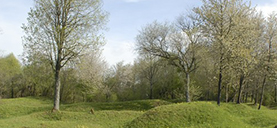
The trenches of Bois brûlé and the Bavarois (Bavarians) (Apremont-la-Forêt, FR)
French and German First World War trenches have been preserved intact in this forest.

Liège Fortified Position 1914-1918 (BE)
Did you know that the Ardent City was awarded the French Legion of Honor for its heroic resistance during the Battle of Liège? Explore the underground galleries and museums in the vast majority of the 12 forts in the company of knowledgeable guides and discover how the soldiers resisted the German army from the early days of the war through unique artifacts, human stories, military vehicles, amazing dioramas, and more.
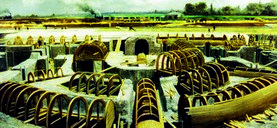
Lantin fort (Juprelle, BE)
Experience the unusual in a remarkably preserved fort! An interactive show/itinerary and a night in a troop’s dormitory will help you relive reality for soldiers in 1914.
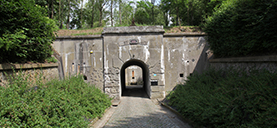
Loncin fort national necropolis and its museum (BE)
Immerse yourself in the nightmare of August 1914! This unique site combines emotions, memory, and history. It houses rare, strange, and even surprising objects.

Liège Fortified position 1940-1945 (BE)
Sixteen strong fortresses, shocking human stories, rare or unique artifacts, impressive military vehicles, realistic dioramas, and more. Passionate multilingual guides recollect the heroic resistance of soldiers against the German army on the outskirts of the Ardent City.
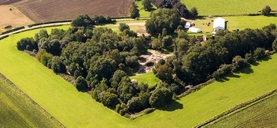
Flémalle fort and its museum (BE)
Stigmatized by the bombings of 1940, today this fortification is experiencing a second youth thanks to the 3D technologies that make the walls tell their tales to the next-generation.
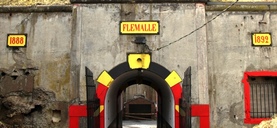
Ethe-Latour and the Laclaireau valley (BE)
Amidst the woods and valleys of the Lorraine region there are multiple villages built in the local style strung out along the roadside which still bear the scars of the battles of 1914. Many commemorative sites are to be found here.
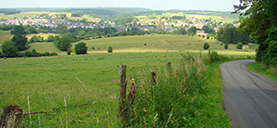
The Marguerre military base at Loison (FR)
These bases to the rear of the lines offer a window onto the daily routine of the German soldier, before and during the Battle of Verdun.
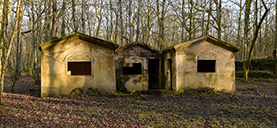
Vaux Fort (FR)
The setting for bitter fighting, this fort symbolizes the bravery of French soldiers during the battle of 1916.
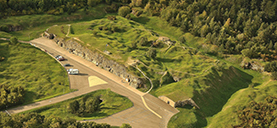
Douaumont Fort (FR)
Douaumont Fort was one of the strongest defensive fortifications in Verdun. It’s one of the key WW1 commemorative sites for both French and Germans.
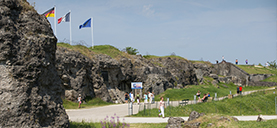
The monument to victory and the soldiers of Verdun (FR)
This monument in Verdun town centre commemorates the successful defence of the town in 1916.

The Butte de Montsec hill (FR)
Built on a hill boasting one of the finest views in Lorraine, this monument commemorates the US soldiers who fought in the area during 1918.
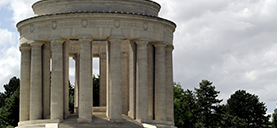
The Meuse-Argonne American Memorial (FR)
This impressive 58-metre high tower commemorates the battles fought by the US Army in the Forest of Argonne region in the autumn of 1918.
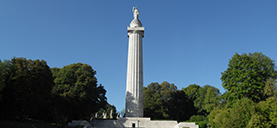
The Butte de Vauquois hill (FR)
This was a place of immense suffering due to the mine warfare waged here. A network of tunnels, several kilometres long, was dug into the hill. Some tunnels are still accessible.

The Maginot line: the Montmédy salient (FR)
The Montmédy salient, a fortified sector, stretches over about 30 km. Its key features are the fortifications at Villy-la-Ferté and Thonnelle.
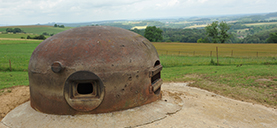
Aubin-Neufchateau fort (and its museum) (Dalhem, BE)
In this stronghold, which had to ensure the protection of the large neighboring forts in 1940, you can discover the combat positions, the underground barracks, and the remnants of a Röchling shell.
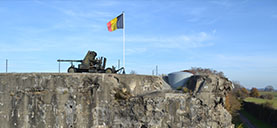
Devèze pillboxes around Houffalize (BE)
These camouflaged pillboxes were built the length of the eastern frontier from the Semois to the Vesdre rivers. These miniature forts were designed to house 3 to 4 men whose job was to slow down the enemy’s advance.

The “Von Grau zu Grün” heritage trail (DE)
This walking trail starts at Dasburg and follows the Nazis’ old defensive line on the western border, which was called the Siegfried Line or ‘Westwall’.

Eben-Emaël fort and its museum (BE)
Discover the five kilometers of galleries belonging to the “giant of the forts” and relive the spectacular attack of 10 May 1940, which resulted in its fall into the hands of the invading army.
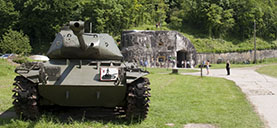
Tancrémont fort (Pepinster, BE)
This site of Belgian military resistance retraces the story of the 40–45 war and showcases local heroes, uniforms from the time, everyday objects, and more.
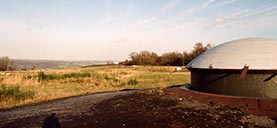
Hosingen and its water tower (LU)
First Lieutenant Thomas Flynn and his company held out for days in a small Luxembourg town before being taken prisoner.
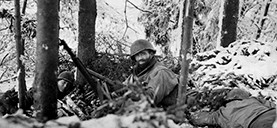
The Smugglers’ trail, Troisvierges (LU)
This project centres on the smuggling into Belgium of members of the Luxembourgish resistance and those fleeing from forced labour during the last years of the war 1940-45.

From Chartreuse to Robermont, memories of 14-18 (Liège, BE)
Walk in the footsteps of the resistance fighters during World War I from Chartreuse and its greenery to the lawn of honor in Robermont.

La Roche-en-Ardenne (BE)
A so-called ‘Martyred town’, destroyed by the Allies in December 1944 during the Battle of the Bulge, La Roche-en-Ardenne was also the place where British and US forces linked up to pinch out the German salient.
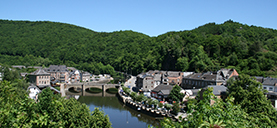
“Le Bois Jacques” (Foy-Bastogne, BE)
Made famous by the television series ‘Band of Brothers’, the wood of ‘le Bois Jacques’, a stone’s throw from the Mémorial du Mardasson, has retained several ‘foxholes’ dug by American paratroopers during the Battle of the Bulge.
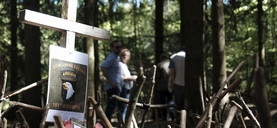
The National Monument to the Strike (Wiltz, LU)
This monument commemorates the victims of German oppression following the Luxembourgish National Strike of 1942.
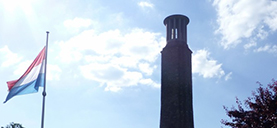
The Duzey gun (FR)
Located in the Bois de Warphémont in Meuse, the German Duzey gun weighed 20 tonnes and had a range of 27 kilometres. Il bombarded Verdun during 1916.

The Chattancourt trench (FR)
Here, a full 100 metre-long trench equipped with shelters has been completely reconstructed with the help of instruction manuals and photographs from the time, along with soldiers’ eyewitness accounts.
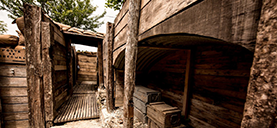
Troyon fort (FR)
This fort is entirely made from masonry, rather than concrete. In September 1914, it resisted German bombardment and infantry attacks, thus saving Verdun from encirclement and protecting the rear of the French forces.

Destroyed villages around Verdun (FR)
Nine villages in the ‘red zone’ were wiped from the map during the Battle of Verdun. These ghost villages, said to have ‘died for France’, have become moving commemorative sites with the construction of chapels and war memorials following the war’s end.

The trench of the bayonets (Douaumont, FR)
This monument, built thanks to an American benefactor, is based on a legend – that of French soldiers buried alive – and upright – by shelling whilst standing on guard in their trenches. The site has retained its power in the collective memory as a symbol of the battlefield of Verdun.

Hollogne fort (Grâce-Hollogne, BE)
This triangular fortification attempted to resist the invading army in August 1914, but it was in vain… Today, the site houses protected fauna and flora.
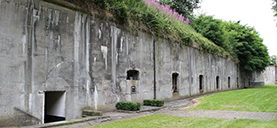
Barchon fort (Blegny, BE)
Between military architecture, wall frescoes, the only air tower that is still intact and can be visited, as well as many on-site sports activities… full of adventures and discoveries are wainting for you.

Battice fort (Herve, BE)
This fort, which resisted the enemy for 12 days in 1940, offers a journey 35 meters under the ground followed by the demonstration of a turret with two guns.

Schumannseck memorial trail (Wiltz, LU)
The Schumannseck memorial trail commemorates the terrible fighthing during the Battle of the Bulge in the winter of 1944-45. The 2.8 km trail follows the old frontline past many relics of the time and visitors will be able to find out more about the lives of both soldiers and civilians during these bloody battles.
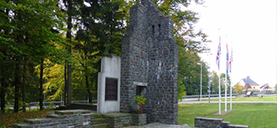
The museums and memorials
The Baillet-Latour and Gaume War museum (Latour-Virton, BE)
Unique in its presentation of the Battle of the Frontiers, this very instructive museum showcases artefacts and documents relating to the local area. It also covers the Second World War from the exodus of civilians in May 1940 on.
Mémorial de Verdun museum and war memorial
The displays and permanent exhibition at the Memorial de Verdun, one of Europe’s key First World War museums, have recently been entirely revamped.
The Saarland regional history museum
The Saarland regional history museum gives visitors an amazing opportunity to experience 500 years of history in a remarkable setting.
The Völklingen ironworks
This iron and steel works is built on a 6 hectare site overlooking the town of Völklingen in the Saarland. It’s the only intact example in western Europe and North America of an integrated ironworks built in the 19th and 20th century which ceased operations relatively recently.
The Domaine du Fourneau Saint-Michel open-air museum in Saint Hubert, BE.
This iron-working museum is located on the actual site of an ironworks dating from the 17th-18th century. The open-air museum of country life showcases typical examples of rural buildings – houses, farms, a church, a school and more.
The Musée en Piconrue, Bastogne
The Musée en Piconrue tells the story of the Ardennes region and its inhabitants. Over the course of your visit, you’ll begin to understand the social, cultural and technological changes that brought the Ardennes region into the modern world.
The metallurgy and industrial heritage museum, Liège
Sited in the heart of the Longdoz district, which has a long industrial heritage, the 2500m² Maison de la métallurgie links the past with the present. Get ready to explore Liège’s remarkable industrial story, right up to the present-day.
The museum of Walloon life, Liège
Located in the heart of Liège, the Museum of Walloon life, which was renovated in 2008, offers an original, comprehensive overview of Wallonia from the 19th century to modern times.
The National Iron Mining Museum, Rumelange, Luxembourg
The Rumelange mining museum boasts guided tours down the old mine galleries, as well as a permanent exhibition on southern Luxembourg’s industrial past.
The Meuse-Argonne American Cemetery
With 14,246 marble grave markers, this is the largest American military cemetery in Europe.
Ouvrage de la Falouse à Dugny-sur-Meuse (FR)
Cet ouvrage de Verdun, complètement restauré propose une véritable immersion dans le quotidien du soldat français.
The world centre for peace, freedom and human rights
Located in Verdun’s upper town, this is an incredible example of a commemorative site, an exhibition venue and a place where people can meet and exchange views, all rolled into one.
Liège inter-allied memorial (BE)
One-of-a-kind, this Art Deco building commemorates the union of the allies during World War I and offers the most beautiful 360° panorama of Liège.
The Robert Schuman European Centre (Scy-Chazelles, FR)
To best showcase the historical significance of Robert Schuman’s house (a European Heritage Label site), the Département of the Moselle, the municipality of Scy-Chazelles and the Association Robert Schuman have pooled their collections under one umbrella, the Robert Schuman museum, on one site, in Robert Schuman’s house.
Westwall Museum (DE)
This old bunker has been largely restored to its original state and is now the Siegfried Line museum.
Bastogne War Museum (Bastenaken, BE)
This military heritage site focuses on the Battle of the Bulge. The recently-constructed museum enables visitors to understand an important part of our modern history through an immersive, highly-educational experience.
The Battle of the Bulge Museum 1944-1945 (Wiltz, LU)
This museum recounts the calvary experienced by the soldiers and local inhabitants during the Battle of the Bulge, from 16th December 1944 to 21st January 1945.
The National Museum of Military History (Diekirch, LU)
This museum presents the events of the Battle of the Bulge (1944-1945) through a series of realistic dioramas.
The Museum of War and Peace in the Ardennes (Novion-Porcien, FR)
The Museum of War and Peace in the Ardennes aims to present the history of the Ardennes region during the three wars of 1870-1871, 1914-1918 and 1939-45. It boasts a highly original approach, focusing on three major conflicts, whereas museums devoted to recent wars tend to examine just one conflict.
The General Patton Memorial Museum (Ettelbruck, LU)
This museum pays tribute to General George S. Patton Jr, whose 80th Infantry Division liberated the town of Ettelbruck for good on Christmas Day, 1944.
Exposition "The Family of Man", Clervaux (LU)
La collection The Family of Man se compose de 503 photographies de 273 auteurs originaires de 68 pays, rassemblées par Edward Steichen pour le Museum of Modern Art de New York (MoMA).
The town of La Roche-en-Ardenne (BE) was destroyed in December 1944 during the Battle of the Bulge
The Battle of the Bulge began on 16th December 1944 – it was the last major German offensive in the west. At La Roche-en-Ardenne, US soldiers were put on a state of high alert on December 17th, 1944. In the space of two days, the town was destroyed. Some 114 civilians were killed. Out of 639 houses, 348 were completely destroyed and 287 damaged. That year’s records of births, marriages and deaths were also destroyed…
The Battle of the Bulge Museum (La-Roche-en Ardenne, BE)
This museum focuses on the British soldiers (English, Scottish and Welsh units) and the Canadian, Belgian and French forces fighting alongside them, who participated in the counter-attack that began in early January 1945.
Bastogne Barracks (BE)
Q.G. de McAuliffe d’où fut répliqué le fameux “Nuts” en décembre 1944, ce site abrite aussi un centre de restauration de véhicules militaires.
Manhay History 44 Museum (BE)
A deux pas d’un char Panther, ce tout nouvel espace est plus particulièrement consacré à un épisode de la Bataille des Ardennes. Grâce à des reconstitutions à échelle réelle (maisons, étables, objets originaux…), le visiteur revit ces moments bouleversants.
The 101st Airborne Museum (Bastogne, BE)
The story of the 101st Airborne Division on the Bastogne front.
Baugnez 44 Historical Museum (BE)
e nouveau musée consacré à la Bataille des Ardennes et au massacre de Baugnez / Malmedy, qui s’étend sur 850 m2 et se répartit sur 2 niveaux, vous présente une muséographie nouvelle ainsi qu’une scénographie d’un réalisme époustouflant.
Remember Museum (Thimister-Clermont, BE)
Musée fascinant et qui compte parmi les plus intéressants du genre, il est installé dans une ancienne ferme et constitué principalement d’objets abandonnés par les 110 soldats de la 1ère Division d’Infanterie américaine en repos à la ferme de Mr Schmetz-père et de souvenirs offerts par les vétérans.
Aubin Neufchâteau fort
This charming little village is composed of a series of delightfully-named hamlets: Les Weides, Affnay, Wodémont, Wichampré, Mauhin, Aubin and Neufchâteau. It was an area largely unfamiliar to the rest of the country, until that terrible day when the deep roar of gunfire drew the eyes of the nation towards it. The heroic resistance of the garrison stationed here was admired even by the enemy. The fort of Aubin-Neufchâteau was built in 1936, with work only just finished by May 10th 1940.
The Museum of the Battle of the Bulge at the château de Clervaux (LU) and guided tours organized by the CEBA on the topic of Clervaux during the war.
This museum recounts the Battle of the Bulge (Winter 1944-45) by means of period documents, uniforms and weapons.
Schumannseck memorial trail (Wiltz, LU)
The Schumannseck memorial trail commemorates the terrible fighthing during the Battle of the Bulge in the winter of 1944-45. The 2.8 km trail follows the old frontline past many relics of the time and visitors will be able to find out more about the lives of both soldiers and civilians during these bloody battles.
National Liberation Memorial (Schumannseck, LU)
During the Battle of the Bulge, Schumannseck was a strategic crossroads where many American and German troops were killed. This is where the National Liberation Memorial was erected on the 50th anniversary of the liberation of Luxembourg. A number of plaques attached to the Memorial commemorate the US units that took part in this battle.
The European Museum Schengen (Schengen, LU)
Opened in 2010, the museum is dedicated to the story behind and the significance of the Schengen Agreement.
Saarbrücken castle (DE)
This baroque castle has suffered major wear and tear down the years, with some parts of the building being partly destroyed by fire. Since 1989, it has recovered its former splendour. Architect Gottfried Böhm designed a contemporary-style central pavilion of steel and glass. The castle is now the administrative headquarters for the district of Saarbrücken, an arts centre and an events venue.
The Territoires de la Mémoire and the Cité Miroir (BE)
Les territoires de la Mémoire is a not-for-profit that aims to teach people civic values and how to resist authoritarian trends. The charity has developed a range of initiatives to help children, young people and adults to remember key lessons of the past and to encourage everyone to play their part in building a democratic society that will preserve fundamental freedoms.
The National Museum of the Resistance (Esch-sur-Alzette, LU)
This museum recounts the history of the Luxembourgers from 1940 to 1945, focusing on Nazi oppression and people’s reaction to it.
The Sacred Way museum
This museum will shed light on the role of the logistics corps of the French Second Army during WW1. Featuring period film footage and special events. Pictured: a Latil lorry from the time.
The Romagne 14-18 museum
This First World War museum pays particular attention to showcasing what day-to-day life was like for soldiers. There is a personal story behind every item on display, with this huge collection having been amassed thanks to Jean-Paul DE VRIES’ passionate interest in the subject.
Liège fortified position 1914-1918
Did you know that the Ardent City was awarded the French Legion of Honor for its heroic resistance during the Battle of Liège? Explore the underground galleries and museums in the vast majority of the 12 forts in the company of knowledgeable guides and discover how the soldiers resisted the German army from the early days of the war through unique artifacts, human stories, military vehicles, amazing dioramas, and more.
Embourg fort museum (Chaudfontaine, BE)
Overlooking the valleys of Ourthe and Vesdre, visit the first large museum dedicated to the fortification of Belgium and the two global conflicts.
Maison du Souvenir (Oupeye, BE)
With its varied exhibitions on the two world wars, this site of remembrance is a real tool for educating and fostering understanding and reflection in young generations.
Cité Miroir Exhibition: “The struggle—Stories of emancipation” (Liège, BE)
These former public baths in Liège, which have been converted into an exceptional cultural and citizenship center, offer a journey through time to the heart of workers’ struggles, which led to the evolution of social rights.
Musée December 44 (La Gleize, BE)
Discover one of Europe’s largest collections dedicated to the Battle of the Ardennes (dioramas, models, old films, tanks, anad more) and relive this bloody tragedy.
The Baillet-Latour and Gaume War museum (Latour-Virton, BE)
Unique in its presentation of the Battle of the Frontiers, this very instructive museum showcases artefacts and documents relating to the local area. It also covers the Second World War from the exodus of civilians in May 1940 on.
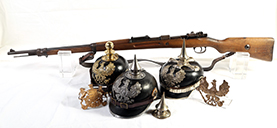
Mémorial de Verdun museum and war memorial (Fleury-devant-Douaumont, FR)
The displays and permanent exhibition at the Memorial de Verdun, one of Europe’s key First World War museums, have recently been entirely revamped.
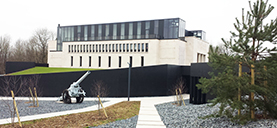
U.S. Wereth Memorial (Amel, BE)
In the peaceful hamlet of Wereth, this monument, which was at first erected by Hermann Langer, honors 11 African-American soldiers who were massacred by the SS in the winter of 1944.

The Saarland regional history museum (Saarbrücken, DE)
The Saarland regional history museum gives visitors an amazing opportunity to experience 500 years of history in a remarkable setting.

The Völklingen ironworks (DE)
This iron and steel works is built on a 6 hectare site overlooking the town of Völklingen in the Saarland. It’s the only intact example in western Europe and North America of an integrated ironworks built in the 19th and 20th century which ceased operations relatively recently.

The Domaine du Fourneau Saint-Michel open-air museum in Saint Hubert (BE).
This iron-working museum is located on the actual site of an ironworks dating from the 17th-18th century. The open-air museum of country life showcases typical examples of rural buildings – houses, farms, a church, a school and more.

The Musée en Piconrue, Bastogne (BE)
The Musée en Piconrue tells the story of the Ardennes region and its inhabitants. Over the course of your visit, you’ll begin to understand the social, cultural and technological changes that brought the Ardennes region into the modern world.
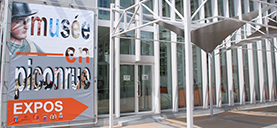
The Metallurgy and Industrial Heritage Museum, Liège (BE)
Sited in the heart of the Longdoz district, which has a long industrial heritage, the 2500m² Maison de la métallurgie links the past with the present. Get ready to explore Liège’s remarkable industrial story, right up to the present-day.

The Museum of Walloon life, Liège (BE)
Located in the heart of Liège, the Museum of Walloon life, which was renovated in 2008, offers an original, comprehensive overview of Wallonia from the 19th century to modern times.

The National Iron Mining Museum, Rumelange (LU)
The Rumelange mining museum boasts guided tours down the old mine galleries, as well as a permanent exhibition on southern Luxembourg’s industrial past.

The Muslim Soldiers’ monument at Douaumont (FR)
Containing the graves of some 15,000 French soldiers, this cemetery occupies a key place in France’s collective memory.
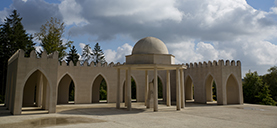
The fortification of la Falouse at Dugny-sur-Meuse (FR)
This was one of the fortifications around Verdun. It has been completely restored and offers an amazing insight into the daily routine of French soldiers at that time.
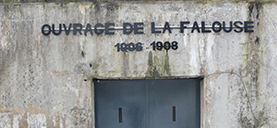
The world centre for peace, freedom and human rights (Verdun, FR)
Located in Verdun’s upper town, this is an incredible example of a commemorative site, an exhibition venue and a place where people can meet and exchange views, all rolled into one.

Liège inter-allied memorial (BE)
One-of-a-kind, this Art Deco building commemorates the union of the allies during World War I and offers the most beautiful 360° panorama of Liège.

The Robert Schuman European Centre (Scy-Chazelles, FR)
To best showcase the historical significance of Robert Schuman’s house (a European Heritage Label site), the Département of the Moselle, the municipality of Scy-Chazelles and the Association Robert Schuman have pooled their collections under one umbrella, the Robert Schuman museum, on one site, in Robert Schuman’s house.
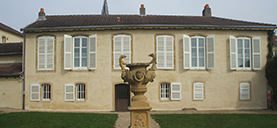
Westwall Museum (Sinz, DE)
This old bunker has been largely restored to its original state and is now the Siegfried Line museum.
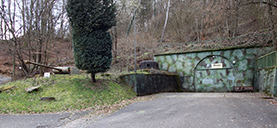
Bastogne War Museum (Bastenaken, BE)
This military heritage site focuses on the Battle of the Bulge. The recently-constructed museum enables visitors to understand an important part of our modern history through an immersive, highly-educational experience.

The Battle of the Bulge Museum 1944-1945 (Wiltz, LU)
This museum recounts the calvary experienced by the soldiers and local inhabitants during the Battle of the Bulge, from 16th December 1944 to 21st January 1945.
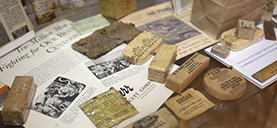
The National Museum of Military History (Diekirch, LU)
This museum presents the events of the Battle of the Bulge (1944-1945) through a series of realistic dioramas.
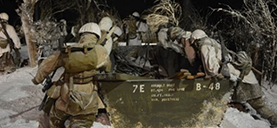
The Museum of War and Peace in the Ardennes (Novion-Porcien, FR)
The Museum of War and Peace in the Ardennes aims to present the history of the Ardennes region during the three wars of 1870-1871, 1914-1918 and 1939-45. It boasts a highly original approach, focusing on three major conflicts, whereas museums devoted to recent wars tend to examine just one conflict.
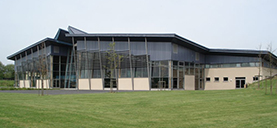
The General Patton Memorial Museum (Ettelbruck, LU)
This museum pays tribute to General George S. Patton Jr, whose 80th Infantry Division liberated the town of Ettelbruck for good on Christmas Day, 1944.

The ‘Family of Man’ photographic exhibition, Clervaux (LU)
The ‘Family of Man’ collection comprises 503 photographs by 273 different photographers from 68 countries. They were chosen by Edward Steichen for New York’s Museum of Modern Art (MoMA).
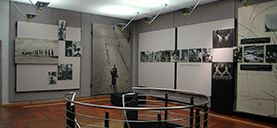
The Battle of the Bulge Museum (La-Roche-en Ardenne, BE)
This museum focuses on the British soldiers (English, Scottish and Welsh units) and the Canadian, Belgian and French forces fighting alongside them, who participated in the counter-attack that began in early January 1945.
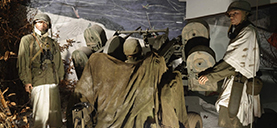
Bastogne Barracks (BE)
The headquarters of General McAuliffe, where in December 1944, the famous response of ‘Nuts’ was given to a German request to surrender. This venue also houses a military vehicle restoration centre.

Manhay History 44 Museum (Manhay, BE)
Located right next to a Panther tank, this brand-new museum pays special attention to one specific event during the Battle of the Bulge, the Battle of Manhay. Thanks to life-size reconstructions (houses, stables) and original artefacts, visitors can experience something of this dramatic time.

The 101st Airborne Museum (Bastogne, BE)
The story of the 101st Airborne Division on the Bastogne front.

The Baugnez 44 Historical Museum (Malmedy, BE)
Discover the key stages and operations in the Battle of the Ardennes through a one-of-a-kind collection and stunning staging.

The Remember Museum (Thimister-Clermont, BE)
In this fascinating and warm museum, which houses hundreds of testimonies from veterans and their personal memories, you will be captivated by the stories that the guides share with you.

The Museum of the Battle of the Bulge at the château de Clervaux (LU) and guided tours organized by the CEBA on the topic of Clervaux during the war
This museum recounts the Battle of the Bulge (Winter 1944-45) by means of period documents, uniforms and weapons.
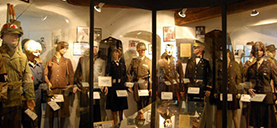
National Liberation Memorial (Schumannseck, LU)
During the Battle of the Bulge, Schumannseck was a strategic crossroads where many American and German troops were killed. This is where the National Liberation Memorial was erected on the 50th anniversary of the liberation of Luxembourg. A number of plaques attached to the Memorial commemorate the US units that took part in this battle.

The European Museum Schengen (Schengen, LU)
Opened in 2010, the museum is dedicated to the story behind and the significance of the Schengen Agreement.

Saarbrücken castle (DE)
This baroque castle has suffered major wear and tear down the years, with some parts of the building being partly destroyed by fire. Since 1989, it has recovered its former splendour. Architect Gottfried Böhm designed a contemporary-style central pavilion of steel and glass. The castle is now the administrative headquarters for the district of Saarbrücken, an arts centre and an events venue.
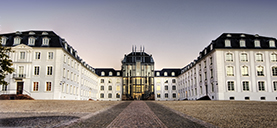
Les Territoires de la Mémoire : Resistance and Citizenship Education Center (Liège, BE)
Discover the moving “Never again!” exhibition, which evokes the journey of the deportees to the Nazi camps,and ask yourself the question: what could be done, and how can we resist today?

The National Museum of the Resistance (Esch-sur-Alzette, LU)
This museum recounts the history of the Luxembourgers from 1940 to 1945, focusing on Nazi oppression and people’s reaction to it.

Commemorative interpretive centre in Rossignol (Tintigny, BE)
This centre provides an immersive insight into the Battle of the Frontiers, with particular focus on the tragic Battle of Rossignol.

The Sacred Way museum (Souilly, FR)
This museum will shed light on the role of the logistics corps of the French Second Army during WW1. Featuring period film footage and special events. Pictured: a Latil lorry from the time.

The Romagne 14-18 museum (FR)
This First World War museum pays particular attention to showcasing what day-to-day life was like for soldiers. There is a personal story behind every item on display, with this huge collection having been amassed thanks to Jean-Paul DE VRIES’ passionate interest in the subject.

Embourg fort museum (Chaudfontaine, BE)
Overlooking the valleys of Ourthe and Vesdre, visit the first large museum dedicated to the fortification of Belgium and the two global conflicts.
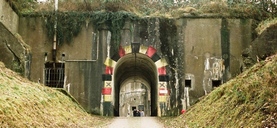
Maison du Souvenir (Oupeye, BE)
With its varied exhibitions on the two world wars, this site of remembrance is a real tool for educating and fostering understanding and reflection in young generations.

Cité Miroir Exhibition: “The struggle—Stories of emancipation” (Liège, BE)
These former public baths in Liège, which have been converted into an exceptional cultural and citizenship center, offer a journey through time to the heart of workers’ struggles, which led to the evolution of social rights.

December 44 Historical Museum (La Gleize, BE)
Discover one of Europe’s largest collections dedicated to the Battle of the Ardennes (dioramas, models, old films, tanks, anad more) and relive this bloody tragedy.
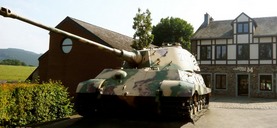
The cemeteries
The cemeteries of Rossignol and Bellefontaine-Tintigny (Tintigny, BE)
Three military cemeteries, the cimetière de l’Orée de la Forêt, cimetière du Plateau and the cimetière du Rada, bear witness to the ferocity of the fighting on August 22nd, 1914.
The Franco-German cemetery of Maissin (Paliseul, BE)
This cemetery contains both French and German graves, as well as a traditional Breton calvary, erected in memory of soldiers from the city of Brest.
Alain-Fournier's grave and monument, Saint-Rémy-la-Calonne
This is where the bodies of Alain-Fournier and his comrades lie. They were killed on 22nd September 1914 and finally discovered in 1991.
The cemetery of Fleur-devant-Douaumont
Containing the graves of some 15,000 French soldiers, this cemetery occupies a key place in France’s collective memory.
The ossuary of Douaumont
This iconic site was constructed in memory of the soldiers of the Battle of Verdun (1916). It holds the remains of 130,000 unidentified soldiers.
Henri-Chapelle American Cemetery (BE)
This military cemetery was created on a 23-hectare site in September 1944 by the First Infantry Division of the First United States Army. The cemetery and the memorial were completed in 1960.
Ardennes American Cemetery and Memorial (BE)
This site commemorates the Battle of the Ardennes. You will be amazed by its splendid greenery, which is home to the tombs of airmen and soldiers, 700 of whom are known, as well as those of others with unusual stories, such as that of Kurt Gruber, a German resistance fighter involved with the US secret service.
German War Cemetery at Sandweiler (LU)
Many German soldiers who died during the Battle of the Bulge during the winter of 1944-45 are buried in this military cemetery in Luxembourg.
The Luxembourg-Hamm American Cemetery (LU)
At the end of December 1944, this cemetery was laid out by the 609th Quartermaster Company of the US Third Army. This American military cemetery is located in Hamm, Luxembourg City and contains the graves of 5,076 American soldiers who died during the Battle of the Bulge during the winter of 1944-45. General George S. Patton is also buried here alongside his soldiers.
Recogne German War Cemetery (BE)
This cemetery contains the graves of 6,807 soldiers who died during WW2. The youngest here was just 17 and the oldest 52 years old.
Hotton Commonwealth War Cemetery
A total of 666 Commonwealth soldiers and airmen are buried in this cemetery. Most died during the Battle of the Bulge.
The cemeteries of Rossignol and Bellefontaine-Tintigny (Tintigny, BE)
Three military cemeteries, the cimetière de l’Orée de la Forêt, cimetière du Plateau and the cimetière du Rada, bear witness to the ferocity of the fighting on August 22nd, 1914.

The Franco-German cemetery of Maissin (Paliseul, BE)
This cemetery contains both French and German graves, as well as a traditional Breton calvary, erected in memory of soldiers from the city of Brest.
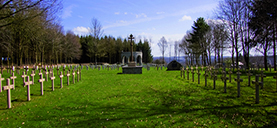
Alain-Fournier’s grave and monument, Saint-Rémy-la-Calonne (FR)
This is where the bodies of Alain-Fournier and his comrades lie. They were killed on 22nd September 1914 and finally discovered in 1991.

The cemetery of Fleury-devant-Douaumont (FR)
Containing the graves of some 15,000 French soldiers, this cemetery occupies a key place in France’s collective memory.
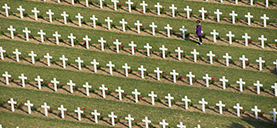
The Ossuary of Douaumont (FR)
This iconic site was constructed in memory of the soldiers of the Battle of Verdun (1916). It holds the remains of 130,000 unidentified soldiers.

The Meuse-Argonne American Cemetery (FR)
With 14,246 marble grave markers, this is the largest American military cemetery in Europe.

Henri-Chapelle American Cemetery (Plombières, BE)
Be moved by this extravagant memorial to World War II and its panorama of the Pays de Herve farmlands. Almost 8000 American soldiers lie here.

Ardennes American Cemetery and Memorial (Neuville-en-Condroz, BE)
This site commemorates the Battle of the Ardennes. You will be amazed by its splendid greenery, which is home to the tombs of airmen and soldiers, 700 of whom are unknown, as well as those of others with unusual stories, such as that of Kurt Gruber, a German resistance fighter involved with the US secret service.

German War Cemetery at Sandweiler (LU)
Many German soldiers who died during the Battle of the Bulge during the winter of 1944-45 are buried in this military cemetery in Luxembourg.
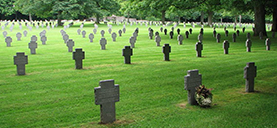
The Luxembourg-Hamm American Cemetery (LU)
At the end of December 1944, this cemetery was laid out by the 609th Quartermaster Company of the US Third Army. This American military cemetery is located in Hamm, Luxembourg City and contains the graves of 5,076 American soldiers who died during the Battle of the Bulge during the winter of 1944-45. General George S. Patton is also buried here alongside his soldiers.

Recogne German War Cemetery (BE)
This cemetery contains the graves of 6,807 soldiers who died during WW2. The youngest here was just 17 and the oldest 52 years old.

Hotton Commonwealth War Cemetery (BE)
A total of 666 Commonwealth soldiers and airmen are buried in this cemetery. Most died during the Battle of the Bulge.

